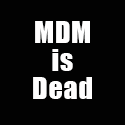
Critical Insight Solutions, an end-to-end for order and clarity from massive amounts of disparate data in real-time, was introduced by Science Applications International Corporation (SAIC) today.
“Through the increased use of electronic health record systems at hospitals and clinics nationwide, healthcare providers are challenged with maximizing the value of their investment, while also trying to find ways to better understand the significant amount of complex data they now have,” said Steve Comber , SAIC senior vice president and business unit general manager. SAIC’s Critical Insight Solutions can help healthcare clients use and explore their data in a number of ways, including enabling changes in clinical practice that can result in reduced healthcare costs and improved patient care.”
The SAIC Critical Insight big data management and analytics solution set are designed to empower organizations to effectively and efficiently leverage the deluge of big data.
“SAIC’s Critical Insight Solutions help energy clients better understand the value of their data – it can be used for both customer education and operational improvements such as developing and deploying alerts to increase efficiencies in the management of the grid,” said Jim Baxter, SAIC vice president for operations. “In this case, data is power.”
Critical Insight Solutions allows users to quickly test analytic hypotheses independent of data volume, speed and structure. It incorporates operationally proven open-source components for data storage and query, extending them with unique capabilities for real-time analytics and alerts, complex full data set modeling and summarization, and time-based model trending.
The key features and benefits of Critical Insight Solutions are as follows: Dynamic ingest and real-time analytics at petabyte scale; Mobile reporting and real-time alerting; Multi-sourced data analytics for trusted decision making; Public, private and hybrid cloud deployment options; Easy application of complex model analytics; Anomaly detection, prediction, and classification of data; “Fast fail” hypothesis testing for discovery of informative insights; A wide range of analytic outputs to measure online discourse; Unstructured data can be collected, processed and analyzed in native language; and applicable to both government and commercial markets.


